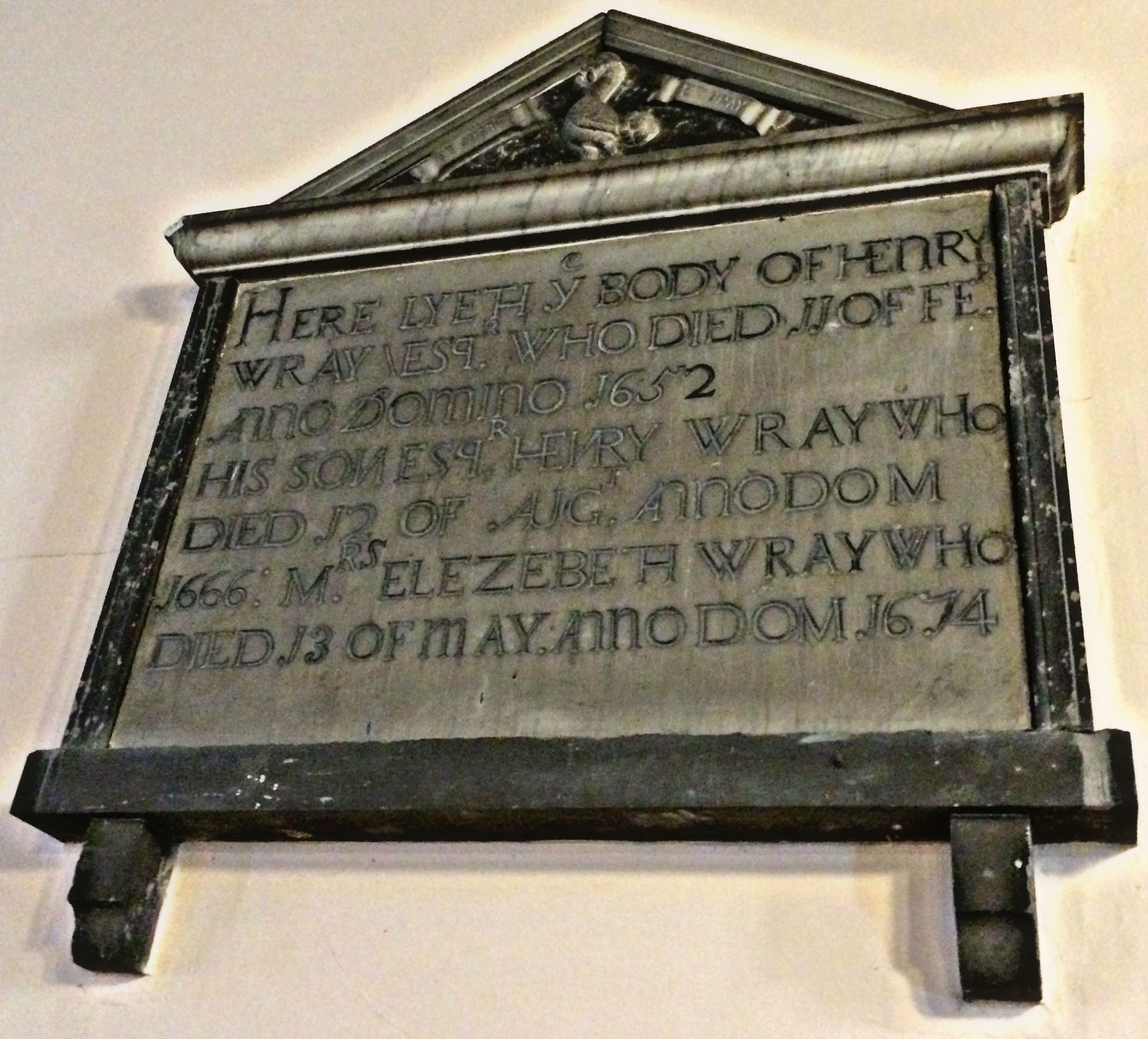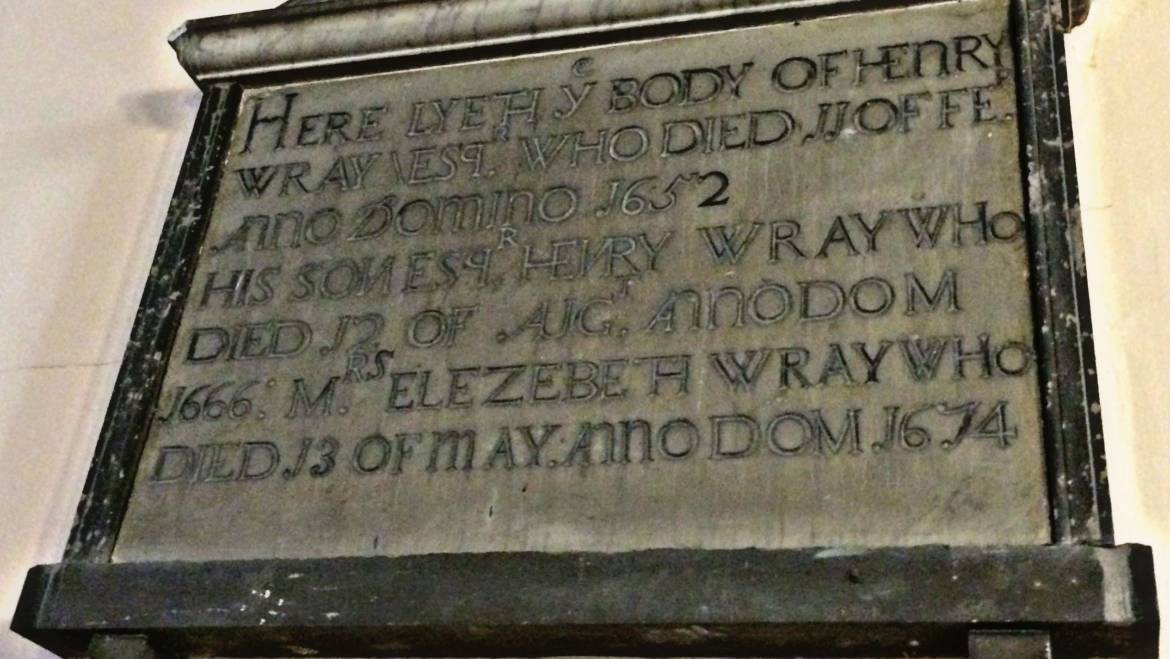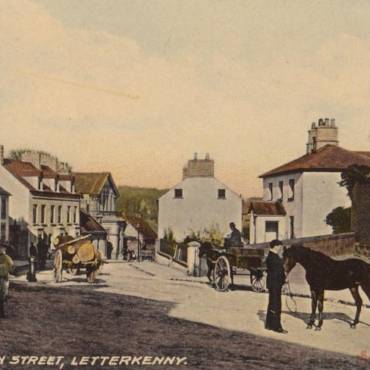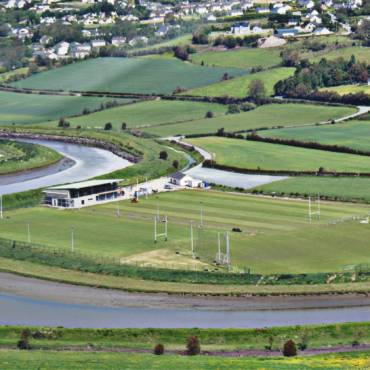The Wrays of Castlewray
The dispossession of lands from Roman Catholics in Ireland that began with the Ulster Plantation had continued unabated throughout the seventeenth century. Allied with this transfer of land ownership in Ireland, there arose a ruling class of aristocrats, landlords and prosperous lawyers, commonly referred to as ‘The Protestant Ascendancy’. Estates that were characterised by stately mansions and large tended gardens arose around the ever growing town of Letterkenny with several privileged families such as the Wrays of Castlewray, the Mansfields of Oakpark, the Groves of Castlegrove, the Stewarts of Gortlee, the Chambers and Stewarts of Rockhill and the Boyds of Ballymacool creating Letterkenny’s very own Ascendancy class between the 17th and 20th Centuries. This post shall look at the Wray family.
The original patentee for the lands around Cornagill in 1611 was Sir John Vaughan, a military engineer who supervised the completion of the walls of the new Plantation town of Londonderry in 1618. John Wray had come to Ireland in the early 1600s from Richmond, Yorkshire and he was well acquainted with Sir John Vaughan purchasing the grand estate at Cornagill from him where he built a large house at Oakpark.
John Wray died in 1624 and his son Henry Wray, aged 14, was named as heir to the manor of Cornagill. In 1639, Henry and his family moved from the original home at Oakpark and built a new house at Castlewray, receiving a grant from the Crown that created the Manor of Castlewray in the process. This is the Henry Wray whose memorial tablet adorns the wall in Conwal Parish Church where he is buried along with his wife and son.
His eldest son, Henry, inherited the estate of Castlewray aged ten, upon his father’s death in 1652, but he himself died at the rather young age of 24 in 1666. The lands then passed to his younger brother William who married Anne Sampson and had a son, Henry in 1673. Upon Anne’s death in 1678 though, William married for a second time, this time to Angel Galbraith by whom he had another son, Humphrey Wray.
In 1700, Henry Wray married Jane Jackson and his father transferred the lands of Castlewray to his supervision as he decided to move his new wife and family to Dunfanaghy. Upon his death in 1710, William named Henry as heir to Castlewray and Humphrey received lands in Ards that had been acquired through his first wife, Anne Sampson.
Henry Wray died in 1737 and the estate passed onto his eldest son, William Wray but when William died in 1767, the estate passed to his son, Henry. This Henry, however was quite a poor businessman and owing to a lavish lifestyle and crippling gambling debts, was forced to sell the manor of Castlewray to Francis Mansfield by 1800, although the Wrays continued to live at the original estate of Oakpark with their status in Letterkenny’s Ascendency greatly diminished.
Henry’s son, William married Elizabeth Mansfield, sister to Francis but upon her death he married Anne Jane Johnston by whom he had a son, William, who took over the estate of Oakpark in 1843. Upon his death in 1888, the Wrays financial status had been diminished even further. A combination of rapidly declining finances on account of the Famine years, crippling debts (Wray had borrowed upwards of twenty thousand pounds) and two sons, William Cecil Wray and Cecil John Wray, who were not interested in tending to the estate led the last of the Wrays, Anna Wilhelmina and her mother to depart Oakpark in 1892 and set sail for California. The Wray estate of Oakpark was then placed in the Encumbered Estates Courts where a local man purchased it for £1,200. This was to be the end of the Wrays of Oakpark and Castlewray.




